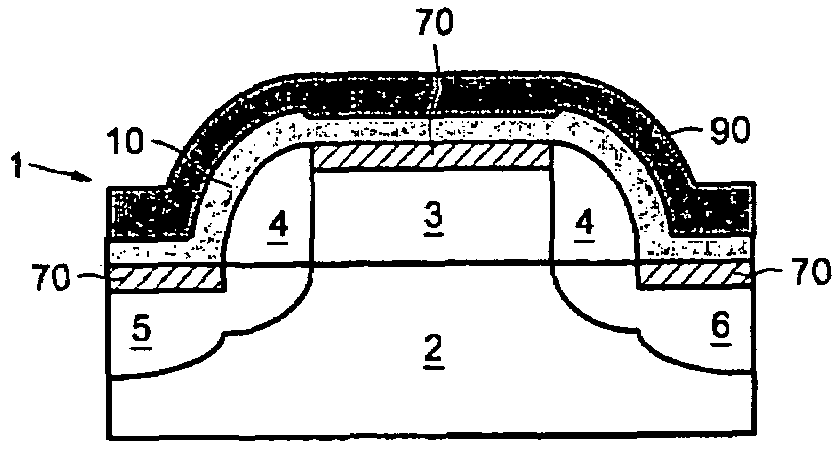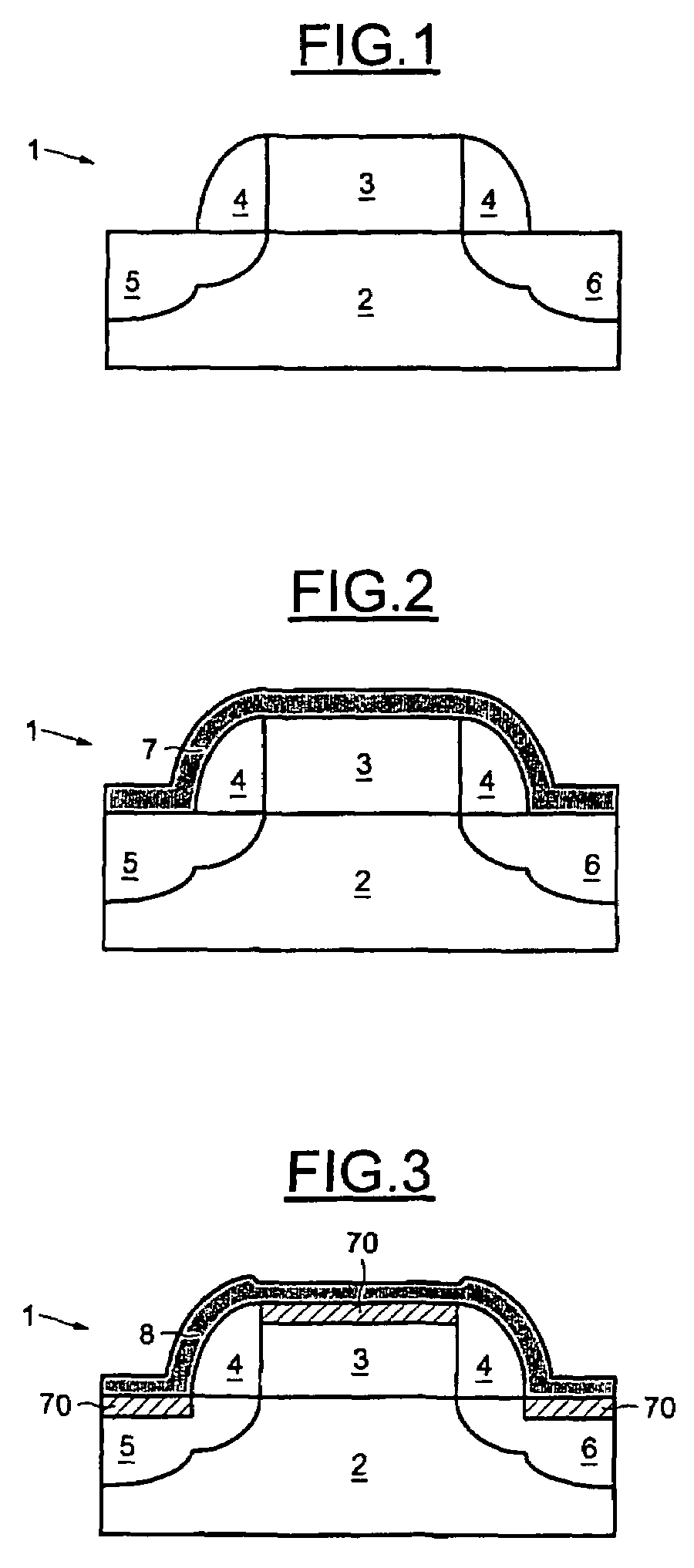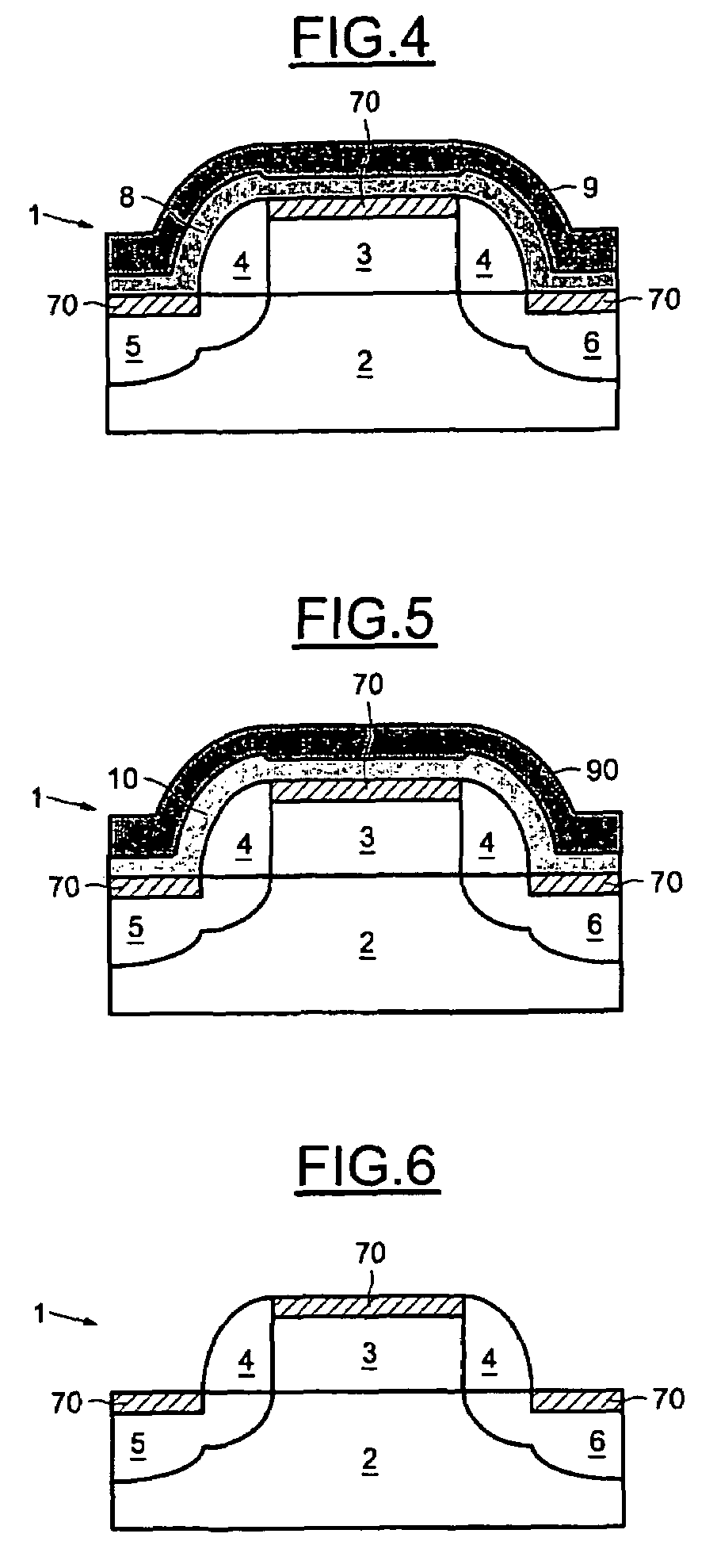Method for the selective removal of an unsilicided metal
a metal and unsilicide technology, applied in the field of integrated circuits, can solve the problems of no silicidation at the spacer and isolating, aqua regia is a chemical solution that is highly corrosive and unstable, and the solution is barely compatible with industrial use, and achieves the effect of metal germanide dissolution
- Summary
- Abstract
- Description
- Claims
- Application Information
AI Technical Summary
Benefits of technology
Problems solved by technology
Method used
Image
Examples
Embodiment Construction
[0029]FIG. 1 shows very schematically a cross section through an integrated circuit 1 comprising a transistor produced on a substrate 2. The transistor comprises a gate 3, spacers 4 placed on either side of the gate 3, a source region 5 and a drain region 6.
[0030]A metal layer 7 is deposited on the surface of the transistor, on top of the source 5, drain 6 and gate 3 regions and on top of the spacers 4. As an example, platinum will be used as the metal. The integrated circuit 1 as shown in FIG. 2 is obtained.
[0031]Next, a silicidation step is carried out. During this step, a metal silicide 70, in the present case platinum silicide, is formed in the source 5, drain 6 and gate 3 regions. However, platinum does not react with the spacers 4, which essentially comprise silicon nitride. The unreacted platinum is on the surface of the transistor and forms in a layer of residue of metal 8 (FIG. 3).
[0032]The next step comprises depositing a second layer 9, comprising germanium, on the transi...
PUM
| Property | Measurement | Unit |
|---|---|---|
| temperature | aaaaa | aaaaa |
| temperature | aaaaa | aaaaa |
| temperature | aaaaa | aaaaa |
Abstract
Description
Claims
Application Information
 Login to View More
Login to View More - R&D
- Intellectual Property
- Life Sciences
- Materials
- Tech Scout
- Unparalleled Data Quality
- Higher Quality Content
- 60% Fewer Hallucinations
Browse by: Latest US Patents, China's latest patents, Technical Efficacy Thesaurus, Application Domain, Technology Topic, Popular Technical Reports.
© 2025 PatSnap. All rights reserved.Legal|Privacy policy|Modern Slavery Act Transparency Statement|Sitemap|About US| Contact US: help@patsnap.com



